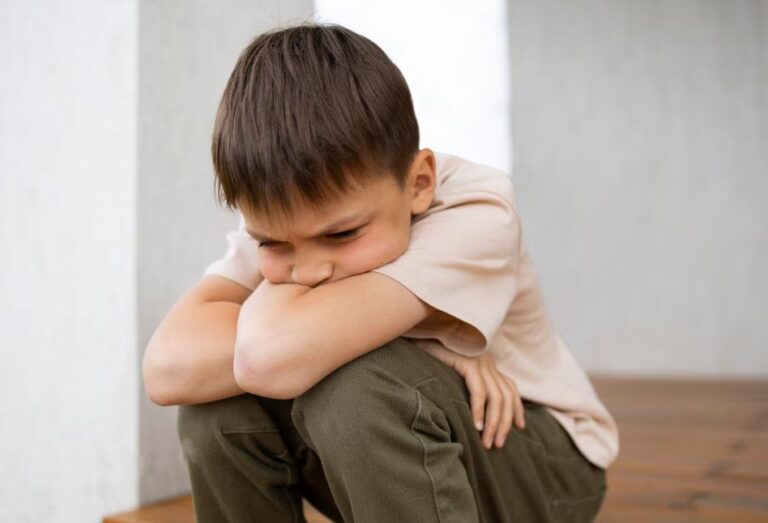Bullying exists not only among teenagers in settings like schools and clubs but also in workplaces. However, compared to adults, teenagers may lack the ability to cope with bullying and find it easier to get hurt psychologically and physically to varying degrees.
Television dramas often depict seemingly inconspicuous teens being humiliated at school by mean peers. After years of growth, these ‘unpopular students’ may transform into charismatic and successful adults who retaliate against those who bullied them in school. While such stories exist, more often, people who experience bullying suffer through their early years and may even revisit these traumatic experiences in dreams as adults – it is not as easy as we think to retaliate or let go.
The Impact of Bullying on Mental Health
Sometimes, the signs of a child being bullied are not physically visible (such as bruises). The victims often feel ashamed and confused about why they are targeted or deemed ‘unpopular’, which leads to feelings of despair, loneliness, and immense psychological stress. Over time, these accumulated mental scars can erode self-confidence and lead to severe outcomes like depression and suicide.
Both experienced teachers and community workers, as well as students beginning their degrees in Masters in Children’s Mental Health, should recognise the profound impact of bullying on children’s development. They should strive to reduce or promptly intervene in bullying incidents during their professional practices and to foster a fair and inclusive environment for all kids. Outside of school settings, due to guardians’ limited awareness or inconsistent standards for identifying bullying, the feelings and experiences of bullied teens may not receive adequate attention.
As adults who aspire for our children to develop healthy personalities and face the adult world confidently, we must start with recognising and preventing bullying to minimise its damage to children’s mental health.
Recognising: What Are Bullying Behaviours
1. Physical Aggression
Actions that cause bodily harm, such as kicking, tripping, and hitting. Physical bullying can also involve damaging possessions.
2. Verbal Bullying
Not limited to physical attacks, bullying includes the intentional use by one or more individuals to hurt, threaten, or intimidate someone through words, behaviours, or actions. This can involve threatening, teasing, name-calling, excluding, and preventing someone from going where they want or doing what they desire.
3. Social Bullying
Acts aimed at damaging someone’s reputation. This can be verbal, like spreading rumours or playing cruel jokes, or non-verbal, such as ignoring someone when they speak or excluding them from groups.
4. Cyberbullying
With advancements in technology, online bullying has become common. It can be more harmful than offline bullying as it is often anonymous, seems relentless, and can quickly spread to a large audience. Forms of cyberbullying include receiving mean, threatening, or abusive messages across various digital platforms, and the malicious sharing, commenting on, or editing of private photos.
Prevention: How to Protect Yourself and Treat Others Kindly
1. Educate children to recognise the signs of bullying
Under peer pressure, some children may tolerate or comply with bullying to fit into social groups. They may find it difficult to discern whether rude or harsh behaviours and words constitute bullying. Parents and teachers can provide preventive education, such as detailing what behaviors are considered bullying and how to seek help including communicating with trusted adults or reaching out to support services.
2. Be vigilant about children’s daily behaviour
Some children might not willingly disclose their bullying experiences due to various reasons, including distrust of family members or threats from bullies.
Parents and teachers should pay close attention to indicators that might suggest a child is being bullied:
- Making excuses to avoid places where they are bullied (e.g., feigning illness to stay home)
- Opting for less direct or slower commuting routes to avoid bullies
- Showing signs of nervousness, tears, or unhappiness at places where they have been bullied
- Expressing dislike for the places where they are bullied or stating they have no friends there
- Unexplained bruises or scratches
- Worn-out clothing with no explanation for the damage
- Missing lunch or lunch money
- Reluctance to discuss events at the bullying location
3. Address if your child is bullying others
Preventing your child from becoming a bully is also a pathway to reducing bullying behaviour. The origins of bullying behaviour are not fully academically supported, but people found that bullies engage in this behaviour to feel important or gain control, compensating for feelings of isolation or inadequacy elsewhere. Parents should reflect on their home environment and whether they exhibit any bullying behaviour themselves. If you discover your child is bullying others, encourage them to reflect on their actions, develop empathy, and understand the consequences of their behaviour. If you need help with how to proceed, seek advice from the child’s school, teachers, or professionals.
Recovery: What to Do If Bullying Has Occurred
If bullying has already happened, adults should reassure the child that bullying is not their fault and help them find solutions to resist bullying.
If bullying reoccurs, there are common strategies to cope:
- Call it out (e.g., frown and say, “That was mean!”)
- Pretend to agree (e.g., “You’re right, I am a loser. Thanks for being so open.”)
- Act unbothered (e.g., “Nice insult. A bit unoriginal though – I give it 3 stars out of 5.”)
- Use humour (e.g., laugh and say, “Good one. I would insult you back, but you wouldn’t get it.”)
However, these methods may not be easy for many children, especially those who are sensitive or have been bullied for a long time. Adults can contact the school or professional organisations to support the teens in recovery. If bullying is violent or threatening, call emergency services immediately.














